Table of Contents
In Germany, around 40% of all roof surfaces are flat roofs. They are familiar features on high-rise buildings, supermarkets, warehouses and even private houses. However, it is important to note that not all flat roofs are the same.
The main types of flat roofs
Flat roofs come in many different varieties, each with its own structure, purpose and materials.
Warm roof (highly insulated roof)
- Description: In a warm roof, the insulation is directly under the roof membrane. There is no ventilation layer, which makes the roof very compact.
- Advantages: Good thermal insulation, low profile.
- Disadvantages: Possible moisture problems if the seal is not perfect.
Cold roof (ventilated roof)
- Description: the ventilated roof has a ventilation layer between the insulation layer and the roof membrane. This layer ensures that moisture is drained away.
- Advantages: Good moisture regulation.
- Disadvantages: Higher structure, more complex construction.
Inverted roof
- Description: In an inverted roof, the insulation is installed above the seal. The insulation protects the seal from temperature fluctuations and mechanical damage.
- Advantages: Longer service life of the seal, good protection against external influences.
- Disadvantages: Increased weight, can lead to drainage problems.
Green roof (living roof)
- Description: A green roof is a type of inverted roof where the top layer is covered with vegetation. It can be either extensive (with sparse planting) or intensive (with more elaborate planting).
- Advantages: Improved insulation, protection of the seal, ecological benefits, rainwater retention.
- Disadvantages: higher construction costs, higher maintenance costs.
Utility roof
- Description: A utility roof is a flat roof that is used for various purposes, e.g. as a terrace, car park or for technical buildings. It is particularly strong and can be subjected to heavy loads.
- Advantages: Multifunctional use, expansion of the usable area.
- Disadvantages: High effort required for sealing and construction, higher costs.
Roof terrace
- Description: A roof terrace is a form of roof that is designed specifically for use as a recreational area. It is often equipped with floor coverings such as wood or tiles.
- Advantages: Creates additional outdoor living space.
- Disadvantages: Complex sealing required, regular maintenance necessary.
Each of these flat roof types has specific properties and applications. Choosing the right roof type depends on individual requirements, the budget and the climatic conditions.
Due to various circumstances, flat roofs are significantly more likely to experience leakage problems:
- Slight slope (water can collect on the roof)
- High weather exposure (can lead to material deterioration, cracking and shrinkage).
- Complex sealing (poorly executed seams or connections quickly lead to leaks)
- Build-up of dirt and leaves (if water can’t drain away, it will stay on the roof, causing leaks and moisture damage).
- Penetrations (ventilation shafts, pipes, antennas) – every penetration point represents a potential vulnerable point.
How can leaks on flat roofs be detected?
We are assuming a warm roof or a green roof here. The most common methods include:
Electronic leak detection (impedance measurement)
This method uses electrical impulses to measure the moisture in the roof structure. Wet areas change the electrical resistance and can thus be detected.
Smoke test
Smoke is blown into the roof structure under pressure, and the smoke comes out at the leaks, which makes it possible to identify them.
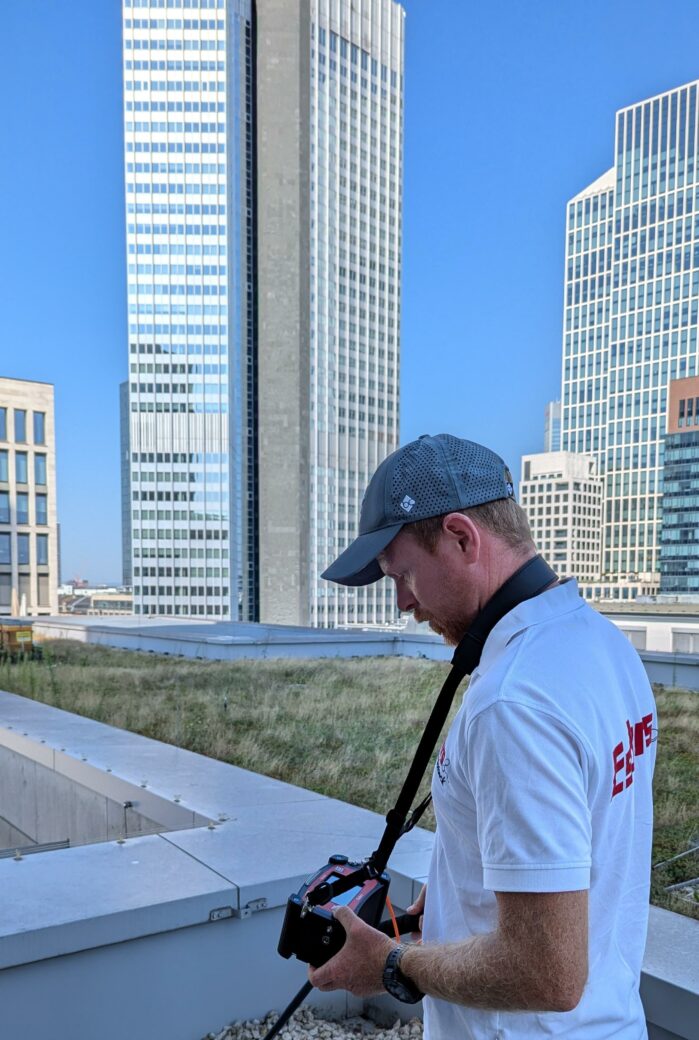
Leak detection with tracer gas
We would like to take a closer look at this topic and go through the tracer gas method step by step:
Tracer gas injection
A special gas mixture, often consisting of hydrogen (H2) and nitrogen (N2), is injected under the roof or into the area of the roof structure where leakage is suspected. Hydrogen is used because it is the lightest and smallest molecule that can diffuse through the smallest cracks and crevices.
Gas movement
The tracer gas spreads under the roof seal and tries to escape through any leaks. As the gas consists of 5 vol.% hydrogen and 95 vol.% nitrogen and the hydrogen it contains is lighter than air, it rises and escapes from the roof structure at the leak.
Detection
A specially calibrated gas sensor that is tuned to the tracer gas is used on the roof surface to detect the escaping gas. The highly sensitive hydrogen sensor of our HUNTER Tracer Gas, with a resolution of 0.1 ppm H2, can detect even very small amounts of the gas, enabling the leak to be localised accurately.
Determination of leakage points
The sensor of the measuring device, such as the HUNTER Tracer Gas, indicates increased gas levels at the points where the tracer gas escapes. These points are marked to determine the exact positions of the leaks.
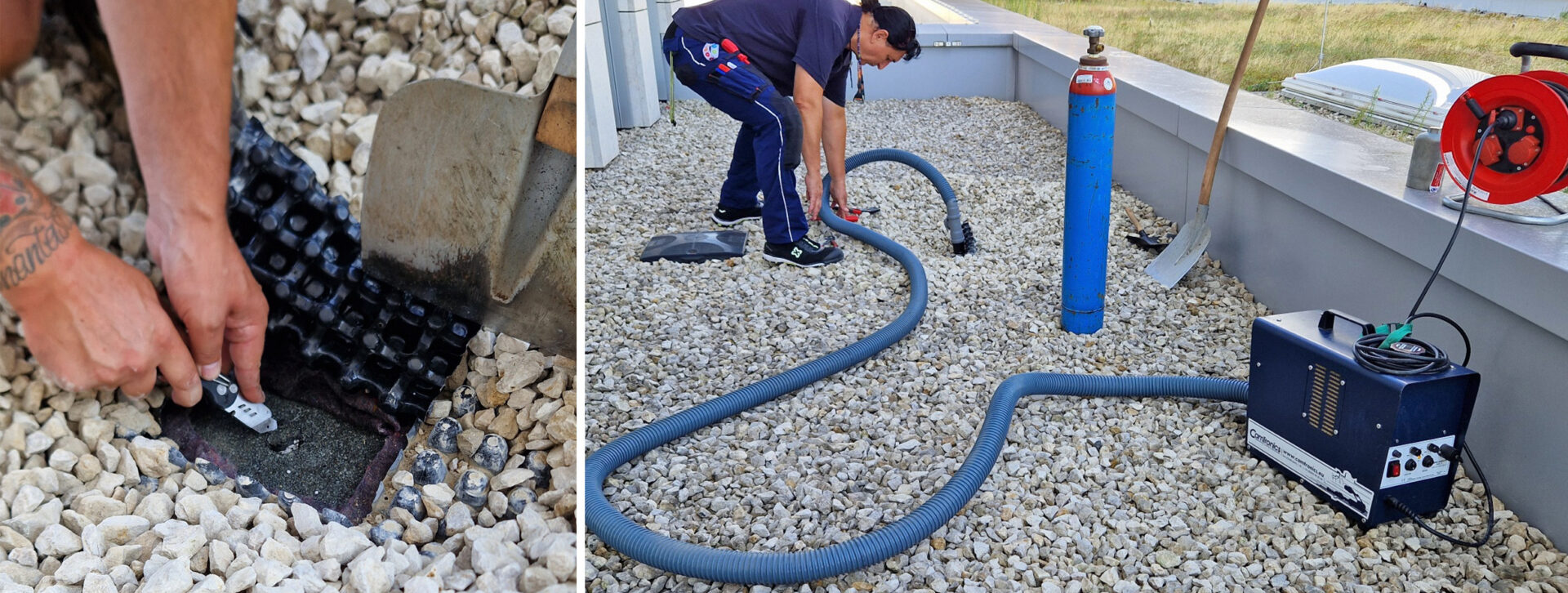
Advantages of the tracer gas method
- High precision: tracer gas can be used to locate even very small cracks that are difficult to detect by other methods.
- Non-invasive: This method does not require any destruction of the roof surface or roof structure, which makes it gentler than many other leak detection methods.
- Fast results: The method usually provides accurate results quickly, so repairs can be carried out promptly.
- Reliability: tracer gas is particularly effective in situations where other methods, such as visual inspection or water pressure testing, fail or are inaccurate.
Fields of application of the tracer gas method
- Flat roofs: Particularly suitable for flat roofs, as the gas also diffuses through small and hidden cracks.
- Warm roofs: This method is effective for warm roofs, where conventional methods often have difficulty localising the leak due to the closed construction.
- Industrial plants and residential buildings: The tracer gas method is also used in larger structures, such as industrial plants or residential buildings, to identify leaks in pipes, walls or roofs.
You can find more articles on the subject of tracer gas here:
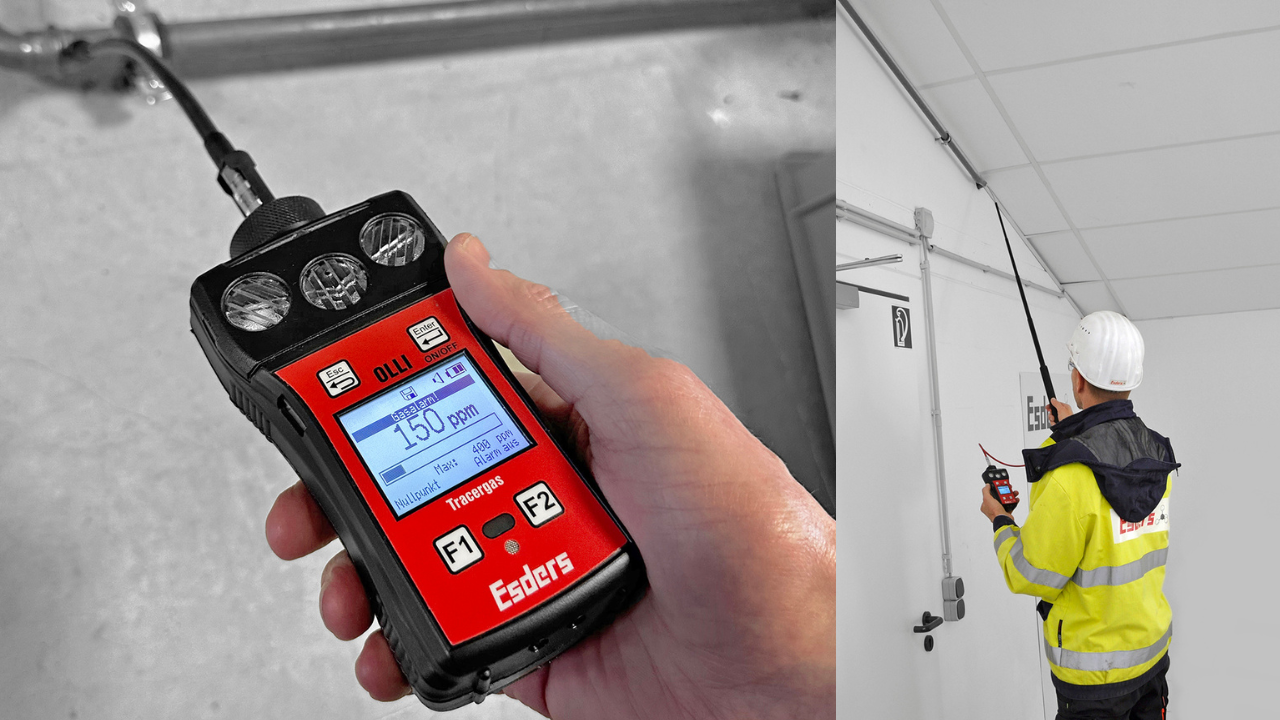
Leak detection with tracer gas: 5 advantages of pump devices vs. diffusion devices
Table of Contents Faster response time of the pump device
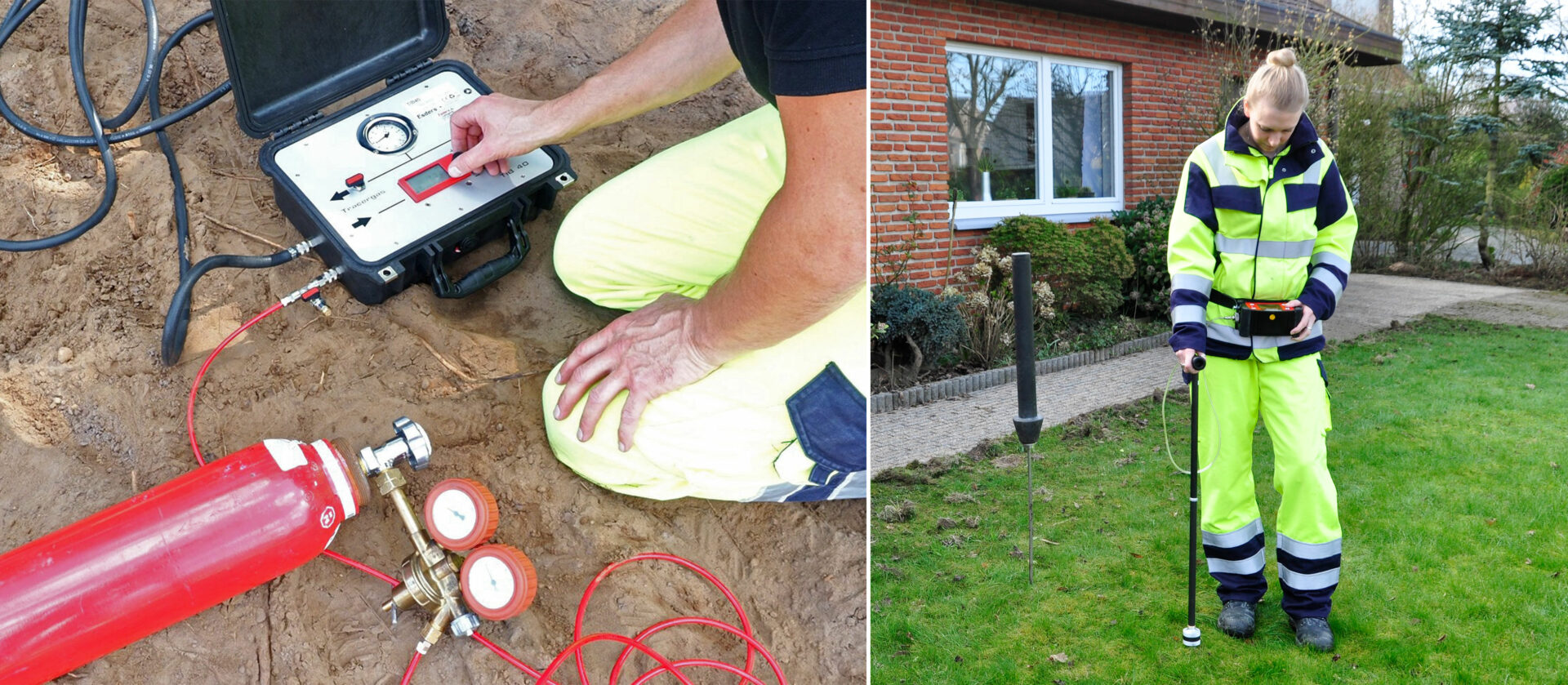
Leak detection on water pipes with tracer gas
Table of Contents Water is a scarce and therefore precious

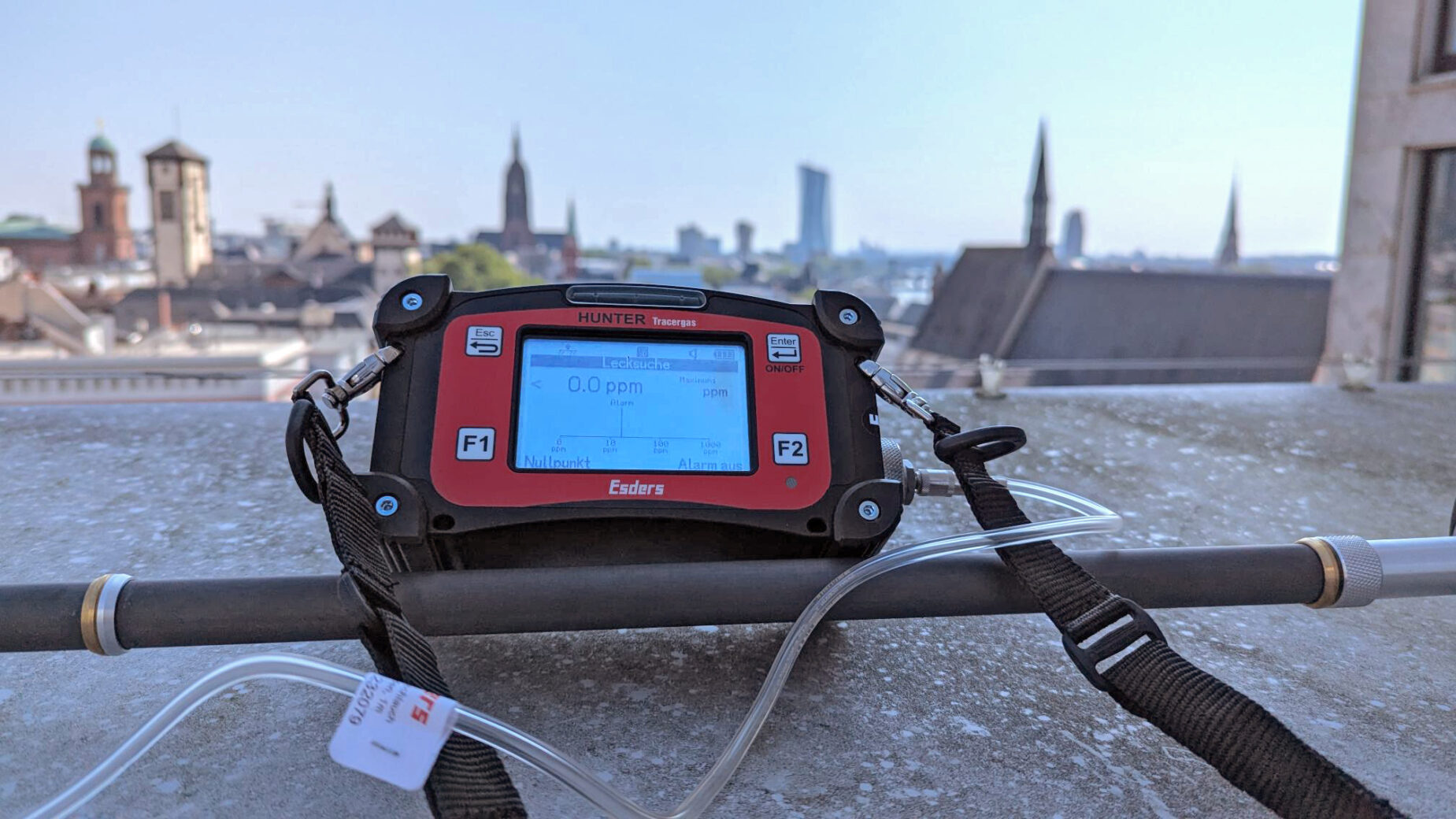
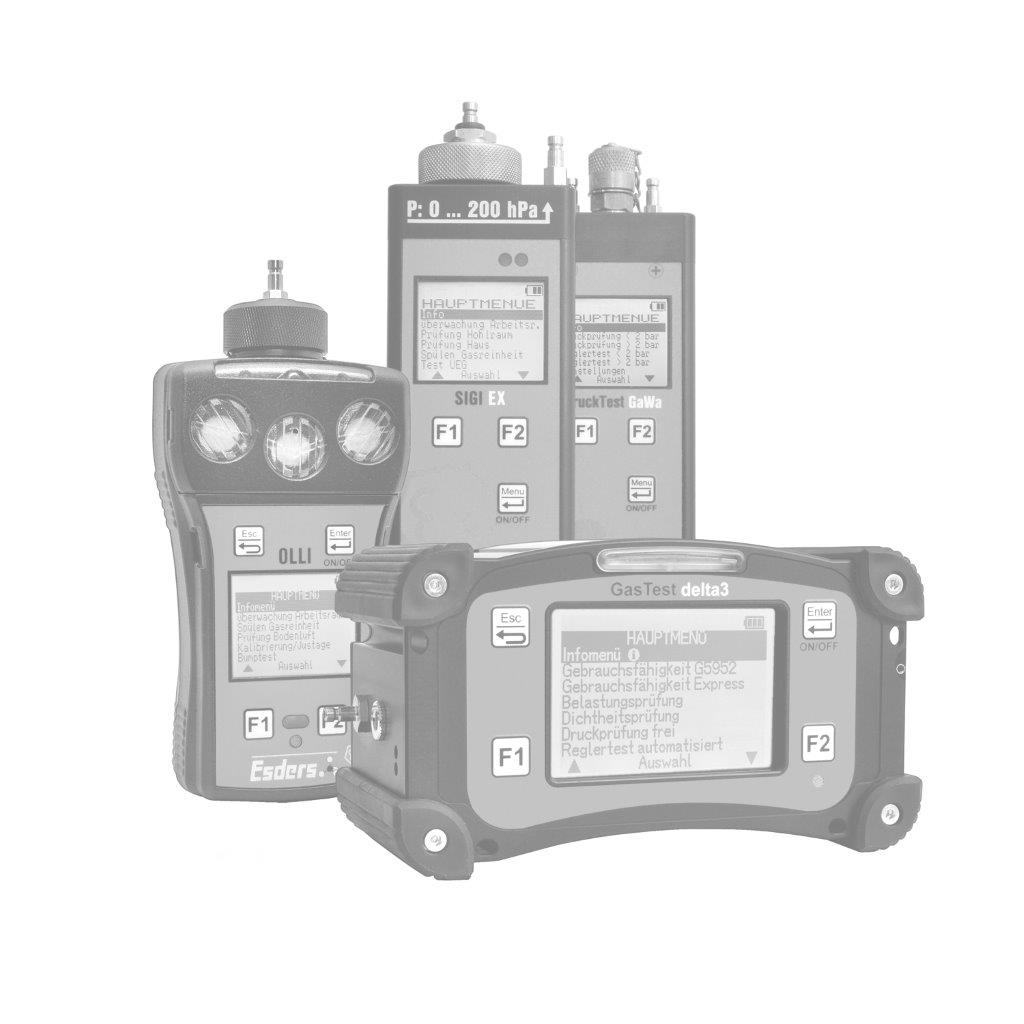.jpg?width=100)